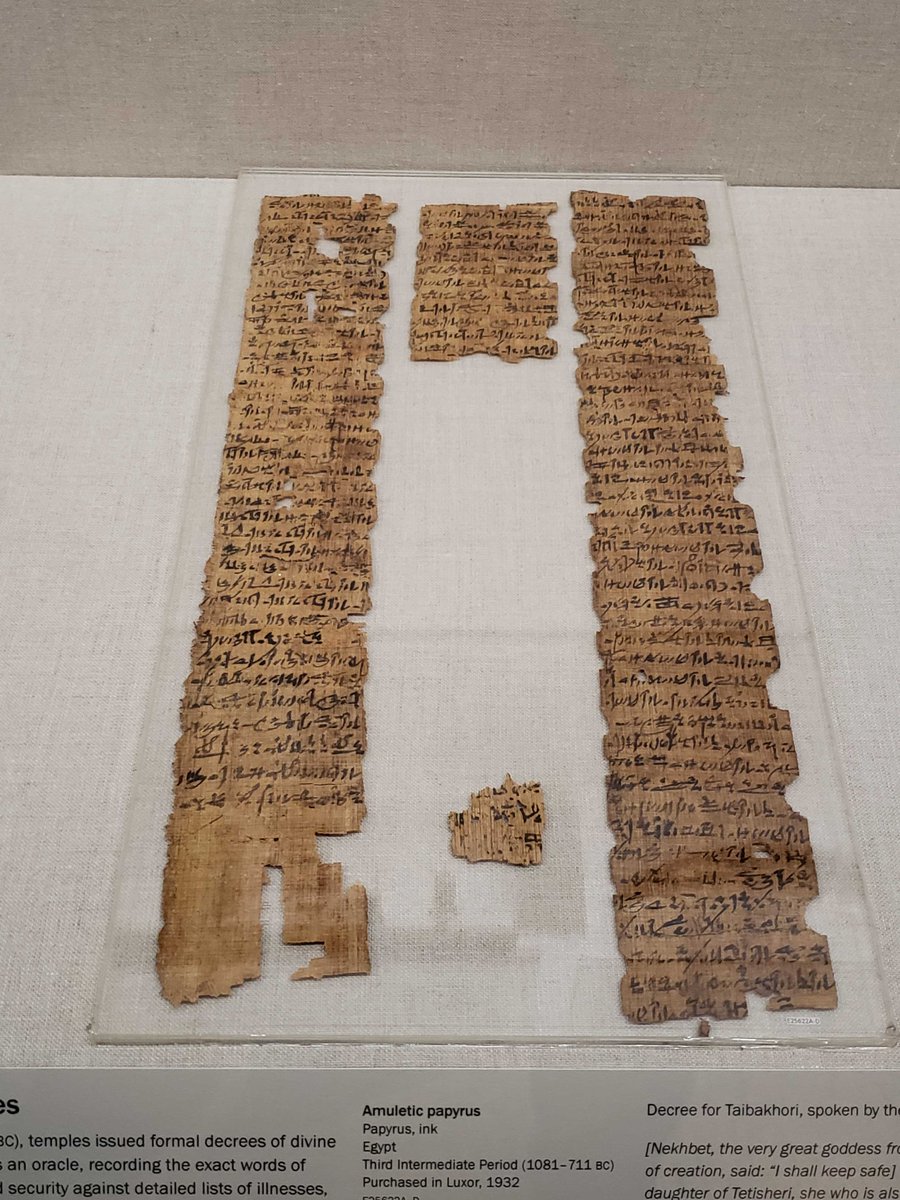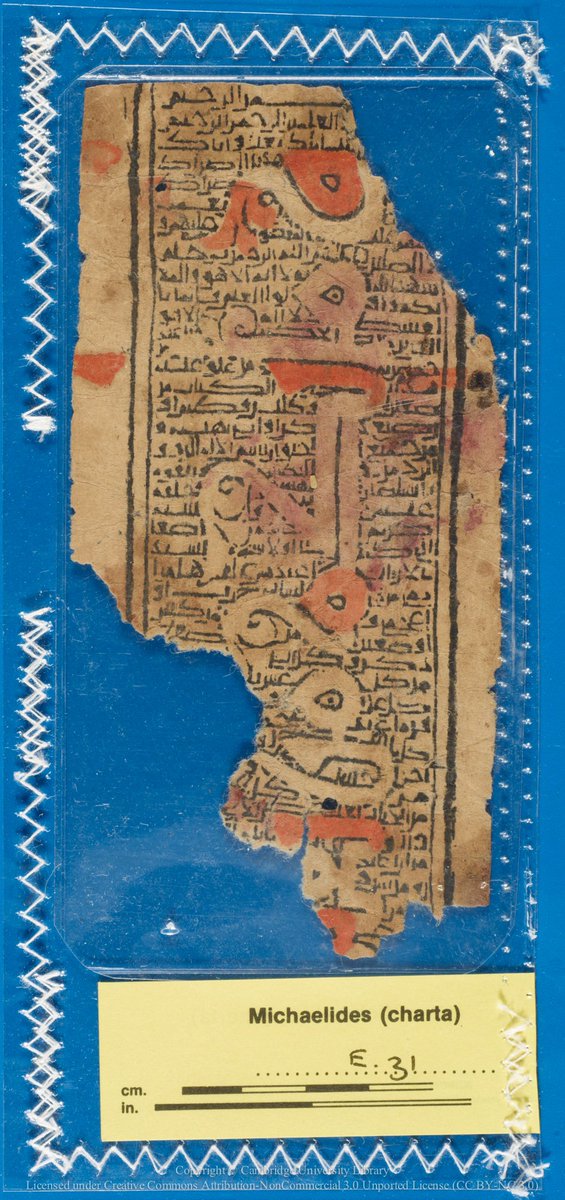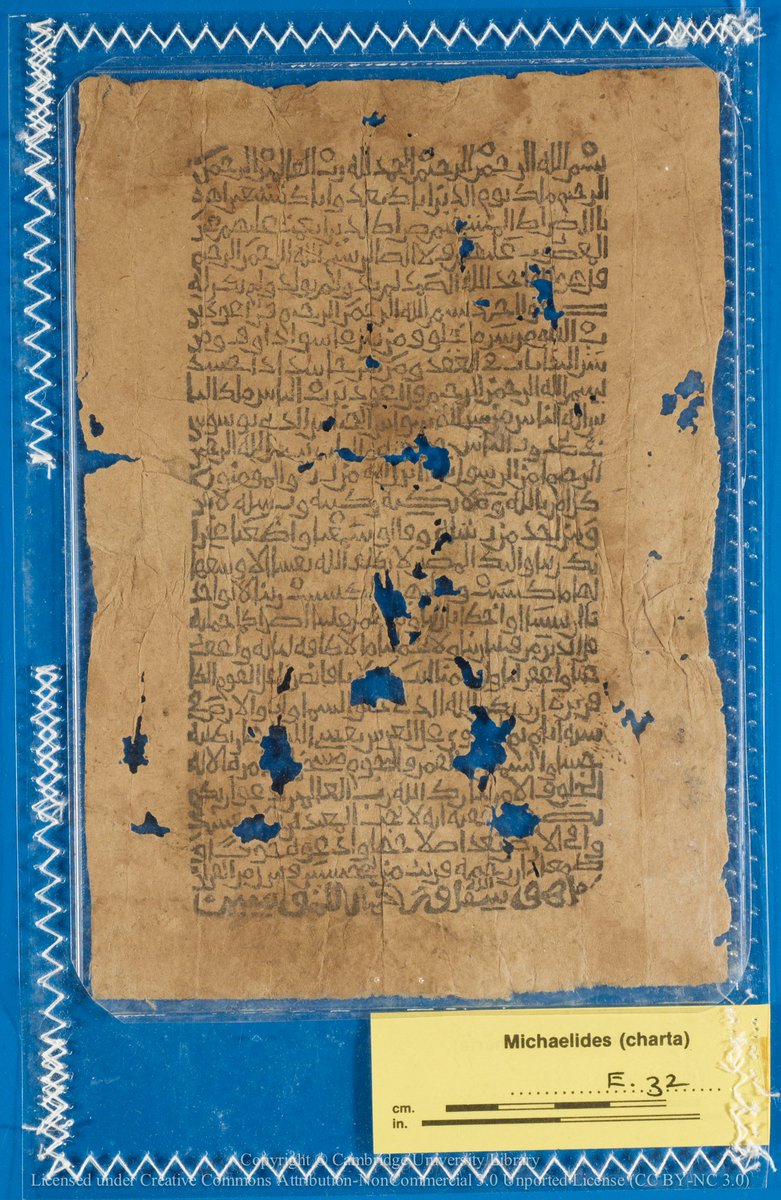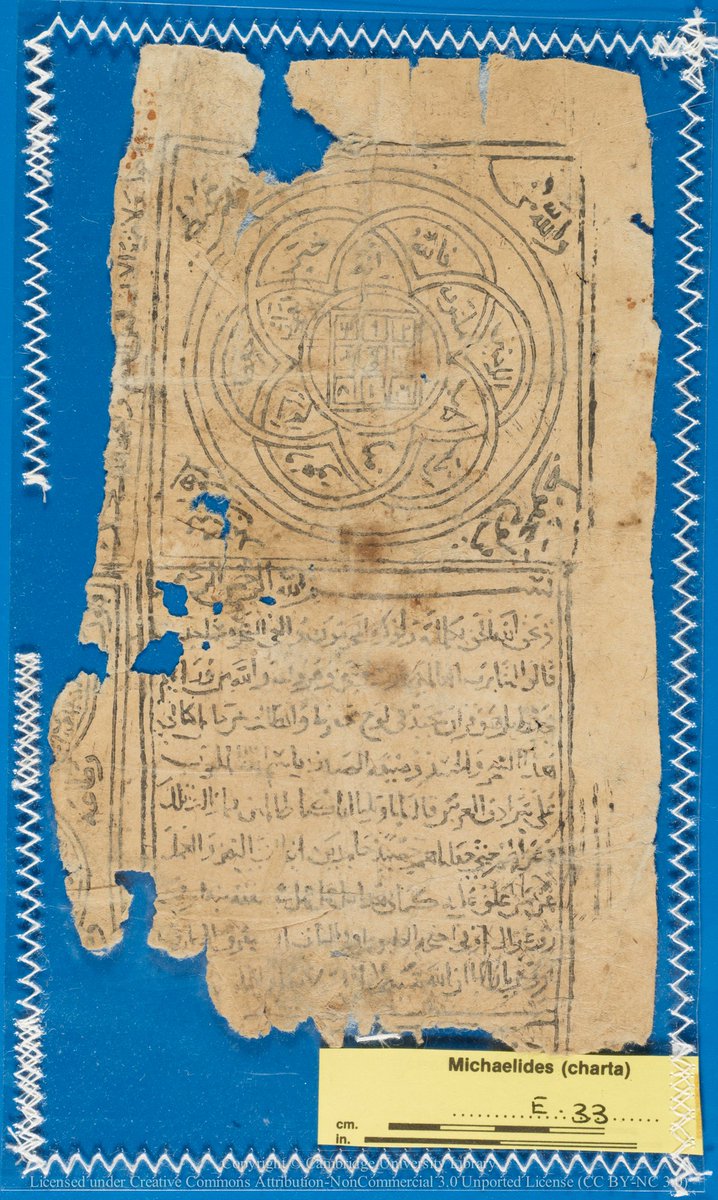1/Centuries before the #printingpress took off in Europe, printers in Egypt employed a type of woodblock printing known as “tarsh” (طرش). Only around 100 of these tarsh prints are known to exist. They are also very cool, so here’s a 🧵on #Arabic block prints in @theUL. #Cambridge 

2/“Woodblock printing” is a term historians use to talk about making a big stamp and slapping paper onto it. Block printers would carve wood so the negative space looked like whatever image or text they wanted to print. Then they’d coat it in ink and stamp some paper. Easy. 

3/Except it wasn’t easy. It takes a lot of skill to carve the negative image of Arabic calligraphy into a piece of wood. I mean just look at this thing. It’s an amulet quoting the #Quran that would have been carried for protection. Most tarsh prints are amulets like this. 

4/These amulets are part of a very long tradition of amulet production in Egypt. There are medieval handwritten amulets contemporary with the tarsh prints that survive in the Cairo Geniza (see @GenizaLab), like these ones for protecting against scorpions: cudl.lib.cam.ac.uk/view/MS-TS-AS-… 

5/But the Egyptian amulet tradition goes back much, much farther. These Demotic #papyrus amulets are dated around 1000-700 BCE, two **millennia** before tarsh printing. I took this picture at the museum of the @orientalinst (where I used to work btw). 

6/Back to #medieval Egypt, we’re pretty sure tarsh printing started around the 10th century (see this article by Richard Bulliet - DM me for access: jstor.org/stable/603463?…). It may have been cheaper to print lots of amulets from a tarsh than to copy them by hand. 

7/Besides #Quranic verses, tarsh amulets also often feature the 99 Arabic names of God. Here’s one example from the Cambridge Genizah collection: 

8/The practice of tarsh printing lasted until about the 15th century, at least based on a print in another library that has a 15th-century watermark. Block printing also spread to Europe around 1300. Incidentally, this tarsh looks a lot like a “block book.” #bookhistory 

9/We’ve even found a #Hebrew block print in the Genizah. Likely meant to be hung over a door, it says “Blessed are you going in, and blessed are you coming out.” The date is disputed but it seems a bit later than the Arabic ones above. See this blog post: lib.cam.ac.uk/genizah-fragme… 

10/There are also many other institutions that hold tarsh prints. The @metmuseum has digitized a beautiful example of one here: metmuseum.org/art/collection… 

12/ Most of what I’ve learned about Arabic block printing comes from the work of Karl Schaefer, particularly in this article (DM me if you need access): brill.com/view/journals/… 



13/One more for the road. If you liked this thread, please go back and like the first tweet. And please join me in thanking everyone at @theULSpecColl for the work they do to take care of these manuscript collections. We share more stuff like this here: instagram.com/cambridgegru/ 

• • •
Missing some Tweet in this thread? You can try to
force a refresh






















